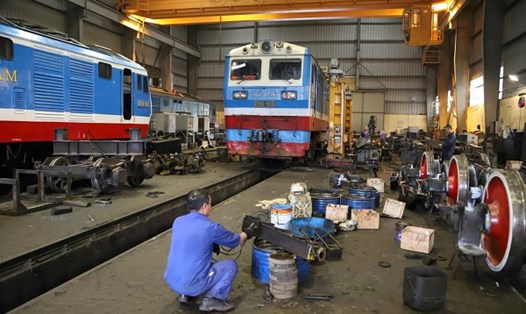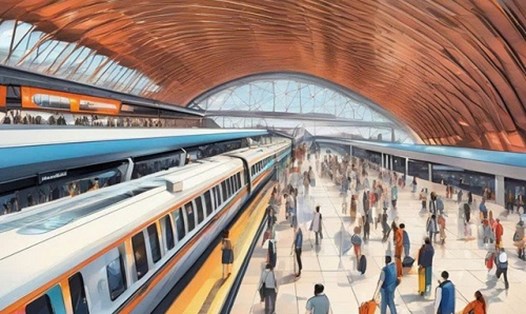Accordingly, high-speed rail ticket prices are divided into 3 levels to suit people's ability to pay, needs and different levels of comfort.
On the Hanoi - Ho Chi Minh City route, first class tickets are about 6.9 million VND, second class is 2.9 million VND and third class is 1.7 million VND.
Speaking to Lao Dong Newspaper, a representative of the Ministry of Transport emphasized that high-speed rail has no precedent, so ticket prices are only temporary. Only when it is in operation will there be accurate information.
Previously, Deputy Minister of Transport Nguyen Danh Huy informed that the high-speed rail ticket price will be equal to the average price of air tickets. The average price of air tickets is calculated based on the ticket prices of the two most popular airlines, Vietjet and Vietnam Airlines.
To help people travel by high-speed rail, the Ministry of Transport also divided tickets into 3 classes: Business class tickets have prices equivalent to business class tickets for people with high-quality needs; Second class tickets have prices equivalent to 0.75% of the average airfare; Third class tickets have prices equivalent to 0.45% of the average airfare. "We have defined each class of tickets so that people can easily access them," said Deputy Minister Nguyen Danh Huy.
Referring to the average ticket prices of the two airlines with the largest market share today, Vietnam Airlines and VietJet (October 2024), preliminary calculations at the present time show: First class ticket is 0.180 USD/km (VIP cabin); 2nd class is 0.074 USD/km; 3rd class is 0.044 USD/km. With the above preliminary rates for the Hanoi - Ho Chi Minh City route: First class ticket is 6.9 million VND; 2nd class ticket is 2.9 million VND; 3rd class ticket is 1.7 million VND.
According to the planned roadmap, the high-speed railway project will be submitted to the National Assembly for approval of investment policy in October 2024, start construction at the end of 2027 and strive to complete the entire route by 2035.
After the North-South high-speed railway is completed, train ticket prices will be calculated appropriately according to 3 ticket classes so that everyone can access and take the train according to the low to high ticket price range.
Accordingly, the fee collected from the service in the form of closed collection ensures market efficiency: Train fares will be paid according to the kilometers of route used by passengers. Therefore, at the entry and exit points of the high-speed railway line of the project, the ticket card system will be arranged to determine the distance of the traffic segments that have used the service.
At the same time, according to the calculation of the Ministry of Transport, high-speed rail ticket prices will increase by 3% per year to compensate for inflation (calculated for ticket price increase every 3 years).
According to the pre-feasibility study report of the North-South high-speed railway project proposed by the Ministry of Transport, investment in a high-speed railway line with a design speed of 350 km/h and a total length of 1,541 km; double track, 1,435mm gauge, electrification; Total investment of about 67.34 billion USD.
The North-South high-speed railway project is being consulted with the starting point at Ngoc Hoi station in Thanh Tri district, Hanoi, including considering a plan to organize train operations so that the high-speed railway can run trains to Hanoi station.
The North-South high-speed railway project is expected to pass through 20 provinces and cities with a total length of about 1,541 km, including 23 passenger stations and 5 freight stations.










